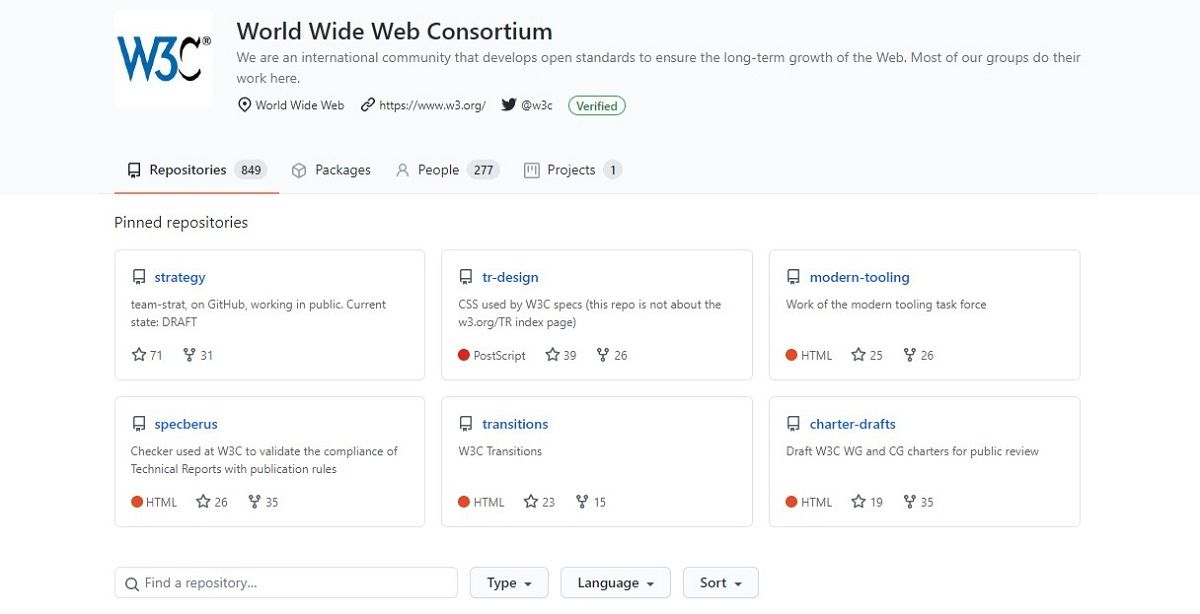It can be easy to take the internet for granted until you encounter a particularly complicated, broken, or poorly run website. The internet doesn't just pop into existence. No, it's created page by page. And a hardworking group called the World Wide Web Consortium (WC3) is trying to make sure that those pages all fit together.
But who exactly is the W3C, and what exactly do they do?
Who Is the World Wide Web Consortium?
The World Wide Web Consortium is an international community made up of individuals and organizations that develop and promote standards for web development. Some of their work takes the form of guides and recommendations, though some of their working groups also post to public repositories like GitHub.
Leadership and Structure
At the top, W3C is led by Director Sir Tim Berners-Lee and CEO Dr. Jeffrey Jaffe. It is administrated by joint agreement among "host institutions" MIT, ERCIM, Keio University, and BEIHANG University. The international staff is represented by a management team. The W3C is funded by member dues, grants, sponsors, and donations.
On the ground, the W3C consists of member groups with representatives in an advisory committee and an elected advisory board. Representatives of member groups and "invited experts" also make up Working Groups and Interest Groups.
Groups and Process
Working Groups produce most of the documentation. Interest Groups serve as open forums that may influence documentation but do not directly produce it.
There are currently over 400 members making up 10 Interest Groups and almost 40 Working Groups.
To learn more about W3C groups, go to their website, select PARTICIPATE from the banner menu across the top, and select GROUPS.
What Does the World Wide Web Consortium Do?
The W3C operates on many levels and in multiple capacities. No matter your interest in the web or your experience with it, you can interact with the W3C and their work through the following initiatives.
Standards and Documentation
The number one job of the W3C is the publication of standards. These are specifications and guidelines that prioritize accessibility on all connected devices. The W3C has composed over 40 documents detailing standards for web accessibility as well as infrastructure and data management.
Web developers use these documents to ensure platform support and user accessibility. However, the W3C also recommends that non-developers explore the documents to better understand how the web is constructed and how it works.
Documents are sorted into seven different categories, ranging from general interest on topics like browsers and web design to more abstract and specialist fields like the semantic web. To find them, go to the W3C website and select STANDARDS from the banner menu across the top of the page.
Opensource Resources
The W3C also maintains a GitHub account with over 800 repositories. Some of these are code and other public frameworks, but this is also where documents are workshopped in public view before being officially published. Like the documents and standards on the main site, these pages are organized by topic for handy perusal or convenient navigation.
Individual groups within the W3C also maintain their own smaller and more specialized GitHub repositories. These are handy and interesting for developers with a specific niche focus like the immersive web.
You can find more resources, including licensing information, by heading to the PARTICIPATE page and selecting CODE.
Events and Outreach
Finally, the W3C engages with the larger community through talks, workshops, and other events in communities worldwide. To look for events coming soon and events near you, go to their PARTICIPATE page and then select CALENDAR.
If there are no events near you, on the same PARTICIPATE page, select DISCUSSION FORUMS for information about online communities, mailing lists, and other opportunities for consistent and remote engagement.
How Can You Work With the W3C?
The most direct way to work with the W3C is through their openly available documentation and resources or via membership. To learn more about membership requirements and benefits, visit their main page and select MEMBERSHIP from the banner menu at the top of the page.
Even people who aren't full members can access much of the documentation and resources. Non-members can also participate in some community events and online communities, as well as W3C community and business groups.
The Most Important People You Haven't Heard of
If you're building on the web, the World Wide Web Consortium can help you keep up with usability and accessibility best practices.
If you use the web, the World Wide Web Consortium can help you understand how your interactions with the web occur. No matter who you are or what you do, you should take the time to get to know them.
Image Credit: Geralt/Pixabay




